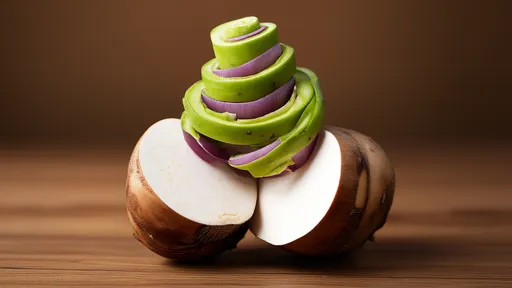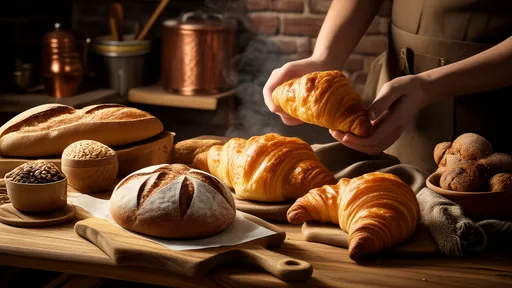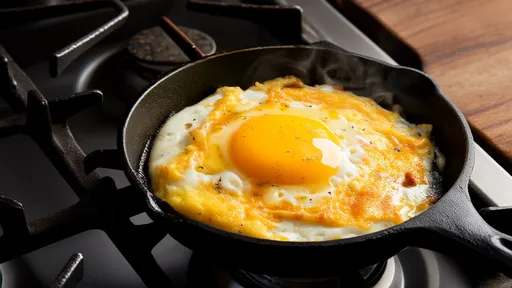The sizzle of batter hitting a hot griddle is the unmistakable sound of breakfast coming to life. But when it comes to crafting the perfect egg burger—a harmonious marriage of fluffy batter, savory fillings, and a golden exterior—timing is everything. The moment you pour that batter into the mold can make or break the texture, structure, and even the flavor of your creation. Too early, and the batter may stick or cook unevenly; too late, and you risk a dry, overcooked shell that lacks the delicate crispness this dish demands.
At the heart of the egg burger’s appeal lies its contrast of textures. A well-executed version should offer a crisp outer layer that gives way to a tender, almost custard-like interior. Achieving this balance hinges on the temperature of the cooking surface and the precise moment the batter meets the heat. Professional chefs and street vendors alike guard their techniques closely, but one universal truth emerges: the griddle must be hot enough to create an instant sear, yet not so scorching that it burns the batter before the inside has a chance to set.
The Science of the Sizzle
When batter hits the griddle, a flurry of chemical reactions begins. Proteins in the flour and eggs denature, starches gelatinize, and the Maillard reaction—the process responsible for browning and flavor development—kicks into high gear. Pour too soon, and the batter will spread thinly, resulting in a pale, limp shell. Wait too long, and the high heat can cause excessive evaporation, leaving the interior dense and chewy. The ideal temperature for most egg burger batters hovers between 350°F and 375°F (175°C–190°C), a range that ensures rapid setting without sacrificing moisture.
Experienced cooks often rely on visual cues to determine readiness. A flick of water droplets should dance across the surface before evaporating—a sign the griddle is primed. Another test involves gently drizzling a ribbon of batter; if it holds its shape briefly before settling, the heat is just right. This fleeting window, often no more than 30 seconds long, is what separates a mediocre egg burger from an extraordinary one.
Batter Consistency: The Unsung Hero
While timing dominates the discussion, the batter itself plays an equally critical role. Too thick, and it won’t flow evenly into the mold’s crevices, leaving gaps or uneven edges. Too thin, and it may seep under fillings or fail to provide enough structure to hold the ingredients together. The ideal consistency resembles a slightly thickened cream—able to coat the back of a spoon but still pourable with a steady stream.
Resting the batter is another often-overlooked step. Allowing it to sit for 15–20 minutes before cooking gives the flour particles time to fully hydrate, resulting in a more uniform texture. Some recipes even call for an overnight rest in the refrigerator, which can enhance flavor complexity through slight fermentation. When combined with precise pouring timing, these nuances elevate the humble egg burger from street food to culinary art.
The Fillings Factor
Timing grows even more crucial when fillings enter the equation. Ingredients like cheese, diced meats, or vegetables must be added at the exact moment the outer batter sets enough to create a seal—typically about 60–90 seconds after pouring. Add them too early, and they’ll sink to the bottom; too late, and they won’t integrate properly. This ballet of ingredients requires attentiveness, as even a few seconds can alter the final product’s architecture.
In bustling night markets from Taipei to Tokyo, vendors demonstrate this precision through muscle memory, their hands moving in a rhythmic dance honed by thousands of repetitions. For home cooks, mastering this rhythm may take practice, but the reward—a golden, crisp-edged egg burger with a molten center—is worth every attempt.
Ultimately, the golden rule of egg burgers is simple: respect the batter’s journey from bowl to griddle. Watch, listen, and learn the subtle language of heat and timing. When executed with care, this unassuming dish becomes a masterclass in texture, flavor, and the quiet magic of perfect timing.

By /Aug 11, 2025

By /Aug 11, 2025

By /Aug 11, 2025

By /Aug 11, 2025

By /Aug 11, 2025

By /Aug 11, 2025

By /Aug 11, 2025

By /Aug 11, 2025

By /Aug 11, 2025

By /Aug 11, 2025

By /Aug 11, 2025

By /Aug 11, 2025

By /Aug 11, 2025

By /Aug 11, 2025

By /Aug 11, 2025

By /Aug 11, 2025

By /Aug 11, 2025

By /Aug 11, 2025

By /Aug 11, 2025

By /Aug 11, 2025